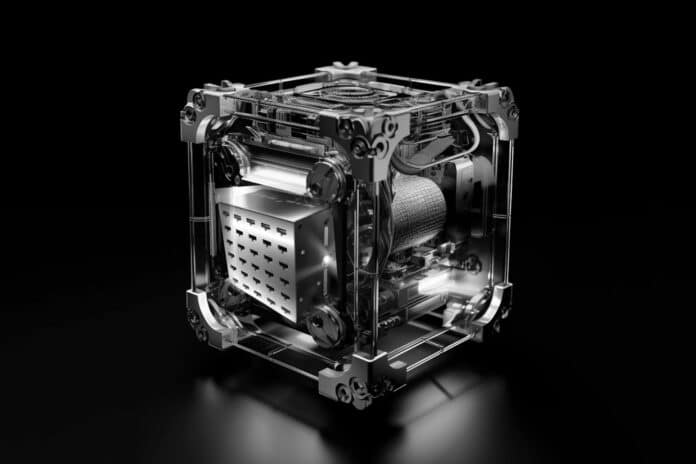RocketStar Inc. has made a breakthrough in space technology by successfully demonstrating the FireStar Drive, an electric propulsion unit that utilizes nuclear fusion-enhanced pulsed plasma. This innovative device takes RocketStar’s base water-fueled pulsed plasma thruster to a whole new level by introducing a unique form of aneutronic nuclear fusion.
The base thruster generates high-speed protons by ionizing water vapor. These protons then collide with the boron atom’s nucleus, causing fusion, which results in a high-energy form of carbon that rapidly decays into three alpha particles.
The FireStar Drive enables this fusion process by introducing boron into the thruster’s exhaust, enhancing the thruster’s performance. This is similar to how an afterburner works in a jet engine by introducing fuel into the exhaust, which improves thrust.
The fusion discovery was made during an SBIR Phase 1 for AFWERX, where boronated water was introduced into the pulsed plasma thruster’s exhaust plume. It created alpha particles and gamma rays, a clear indication of nuclear fusion. It was further validated during the subsequent SBIR Phase 2, where it not only created the ionizing radiation but also improved the base propulsion unit’s thrust by 50% at Georgia Tech’s High Power Electric Propulsion Laboratory (HPEPL) in Atlanta, Georgia.
“RocketStar has not just incrementally improved a propulsion system but taken a leap forward by applying a novel concept, creating a fusion-fission reaction in the exhaust,” said Adam Hecht, Professor of Nuclear Engineering at the University of New Mexico. “This is an exciting time in technology development, and I am looking forward to their future innovations.”
RocketStar has released its latest thruster, the M1.5, which is now available for delivery to customers. It will be showcased in space as a hosted payload on D-Orbit’s OTV ION Satellite Carrier, which will be launched on two SpaceX Transporter missions in July and October this year.
“We are very happy to have the opportunity to work alongside RocketStar and contribute to the demonstration of the M1.5,” said Matteo Lorenzoni, Head of Sales at D-Orbit. “We just integrated the thruster onto the ION Satellite Carrier and look forward to witnessing its performance in orbit.”
Plans to test the FireStar Drive include further ground testing this year, with an in-space demonstration scheduled for February 2025 as a hosted payload on Rogue Space System’s Barry-2 spacecraft.
“We are very excited to test FireStar for RocketStar,” said Brent Abbott, CRO at Rogue Space Systems. “We look forward to considering it for future Rogue missions.”
